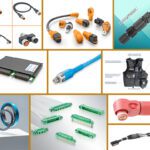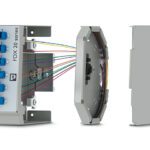New Materials Expand the Capabilities of Medical Connectors
The exploding growth of the medical device market is putting more pressure than ever on the components that make today’s life-saving technologies possible.
By Jean Thilmany
New Materials Expand the Capabilities of Medical Connectors
Connectors destined for use in medical devices face a number of unique challenges. They must be able to withstand frequent connect and disconnect cycles, provide continued precision performance in high-stakes situations, and hold up to constant cleaning, disinfection, and sterilization. They are also subject to rough handling, shock and vibration, and the extreme conditions inside autoclave and pressure chambers.
Medical diagnostic and monitoring equipment can see up to five million activations or uses, said Roger Bohannan, medical segment leader for C&K Switches, which makes switches and connectors. “Those long lifecycles demand higher-grade quality,” he said. “The medical device manufacturers appreciate connectors with high quality and consistency that can stand up to the job over a long period of time.”
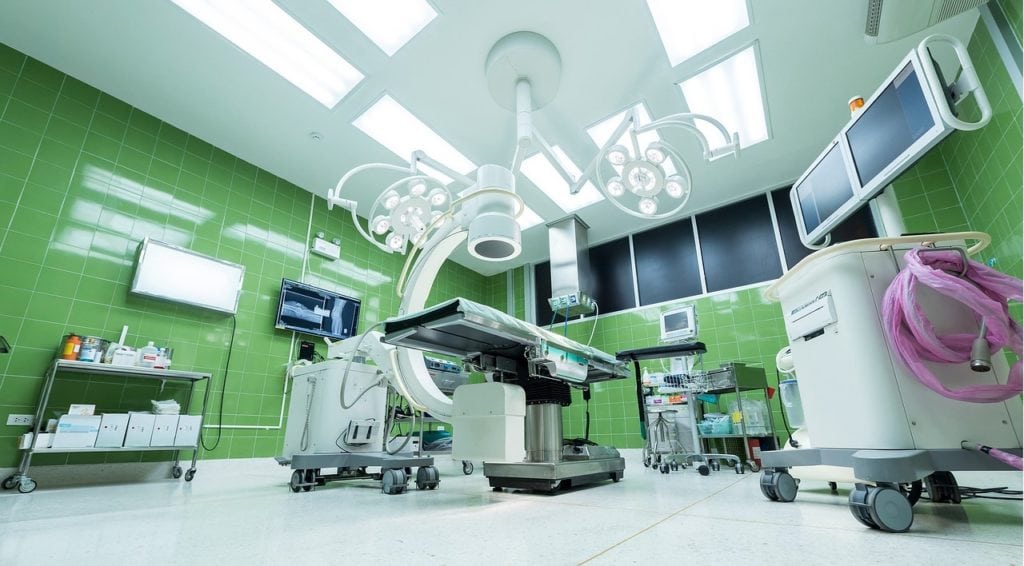
A Rapidly Evolving Market
A number of market factors are creating new opportunities for medical-grade connectors. Bohannan said that medical device manufacturing is on the rise as the population of people 65 and older grows. “The capability to identify the health needs of that population is getting better by the day, and demand in the medical market is growing significantly.”
A new generation of devices has increased connectivity capability to take advantage of the growing Internet of Things. Equipment designed for home use must be able to communicate with medical teams in the clinic, stationary imaging equipment needs to be able to quickly transfer information across departments or facilities, and the connectors in these devices must be able to facilitate fast data transfer, said Bohannan. In addition, they must also be able to withstand rough handling by both patients and medical personnel with varying degrees of experience, especially in high-stress situations.
Small portable devices, such as the whirring dental tools used to clean teeth, are easily dropped in the clinic environment. The connectors inside must promise secure connections in the event of vibration, jostling, and sudden impact. Larger equipment, such as MRI machines, X-ray equipment, and medical machines that are on wheeled carts, risk being jammed into doorframes and walls or bumped by patient gurneys or cleaning staff. So, again, secure connections are paramount. Additionally, disposable devices, a rapidly growing area of medical equipment, call for disposable connectors, which must balance affordability with high performance.
New Materials Make a Difference
To address the needs of this complex market, connector manufacturers are turning to new materials that hold up to the rough use that medical devices and machines regularly experience.
Fischer Connectors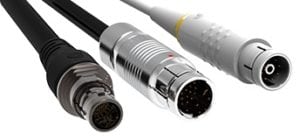 utilizes chrome-plated brass housings for its medical-grade connectors, as the material stands up to repeated sterilization. Other medical connectors from the company are sealed with high-temperature plastics, like polyetheretherketone (PEEK) to insulate the connectors, said David Cianciolo, Fischer Connectors’ director of engineering.
utilizes chrome-plated brass housings for its medical-grade connectors, as the material stands up to repeated sterilization. Other medical connectors from the company are sealed with high-temperature plastics, like polyetheretherketone (PEEK) to insulate the connectors, said David Cianciolo, Fischer Connectors’ director of engineering.
PEEK is an organic thermoplastic polymer with excellent mechanical and chemical resistance properties that are maintained at high temperatures. PEEK seals can be heated, cooled, and heated again without degradation and, according to Cianciolo, materials makers are now offering blends of PEEK and other materials for even greater benefits.
In 2016, polymer manufacturer PolyOne, acquired composite manufacturer Comptek. This move has enabled PolyOne to make PEEK-based material blends available for North American medical devices. These blends create parts that can withstand higher temperatures than standard PEEK and have better post-processing shrinkage control and improved colorability, said Barto Du Plessis, vice president Asia at PolyOne.
These PEEK-based blends, originally developed by Comptek, have a glass transition temperature up to 104°F higher than standard PEEK formulations, which means they can withstand greater operating temperatures and high-temperature sterilization without warping, said Du Plessis.

Fischer’s cable assemblies are insulated against high temperatures by using silicone. The addition of a low-friction coating to the cables also allows for easier and smoother handling, cleaning, and disinfecting of medical assembles, said Cianciolo.
“You may think of the operating room as a cool white space, but the reality is far different,” he said. “Not only are devices used and sterilized again and again, but medical practitioners in the room are hurrying back and forth, and can bump the devices against countertops and other fixtures in the room. Many of our customers use our connectors and cable assemblies on motorized surgical tools that require a durable, reliable metal connector that can withstand the abuse of the operating room.”
Since the tools have to be sterilized often, Fischer’s connectors and cable assemblies can withstand the heat of autoclaves and commercial sterilizers, said Cianciolo. “Silicones don’t dry out and stiffen with repeated sterilization, as do many thermoplastics.”
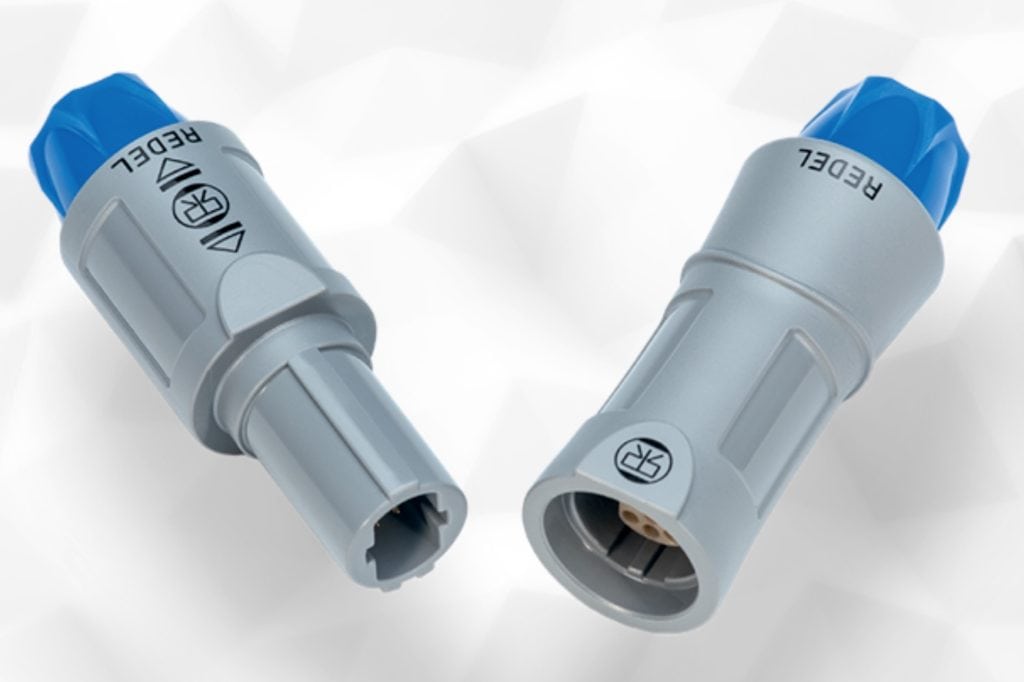
LEMO’s Redel SP connectors are made with a proprietary polysulfone (PPSU) material that enables extensive sterilization cycles and high chemical resistance. PPSUs are a family of thermoplastic polymer materials known for their toughness and stability at high temperatures. This FDA-approved material is free of Bisphenol A (BPA) chemicals, said Steven Lassen, a LEMO applications engineer.
These connectors are commonly used in infant-care products such as neo-natal incubators. BPA is an xenoestrogen, which means it exhibits estrogen-mimicking, which has raised concern about its suitability in some consumer products and food containers. The European Union and Canada have banned BPA use in baby bottles. In recent years, some manufacturers have introduced BPA-free components for medical applications to address these concerns.
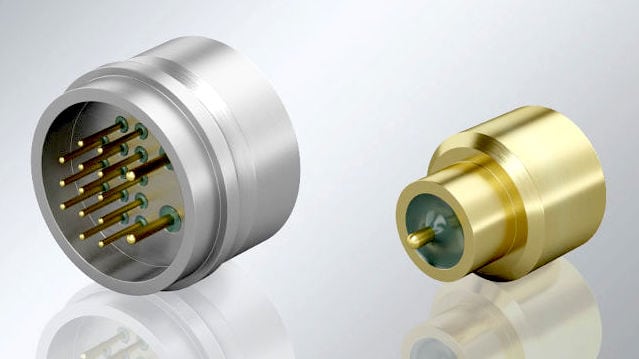
SCHOTT Electronic Packaging offers its custom Eternaloc connectors for medical equipment. They’re made from what the company calls inorganic and therefore non-aging materials, with glass or ceramic as the insulator. The use of hermetic glass-to-metal-sealing or ceramic-to-metal-sealing technologies can prevent the permeation of moisture or gases, which could cause internal corrosion, degradation of the electronic components, and malfunction of the equipment, according to SCHOTT.
Medical equipment is moving into new spaces, handling greater degrees of information transfer, and providing better treatments and care than ever before. The materials used in these machines is evolving as well to provide continued performance under pressure.
Interested in a specific market? Click a market below for current articles and news.
Automotive, Consumer, Industrial, Medical, Mil/Aero, Datacom/Telecom, and Transportation







